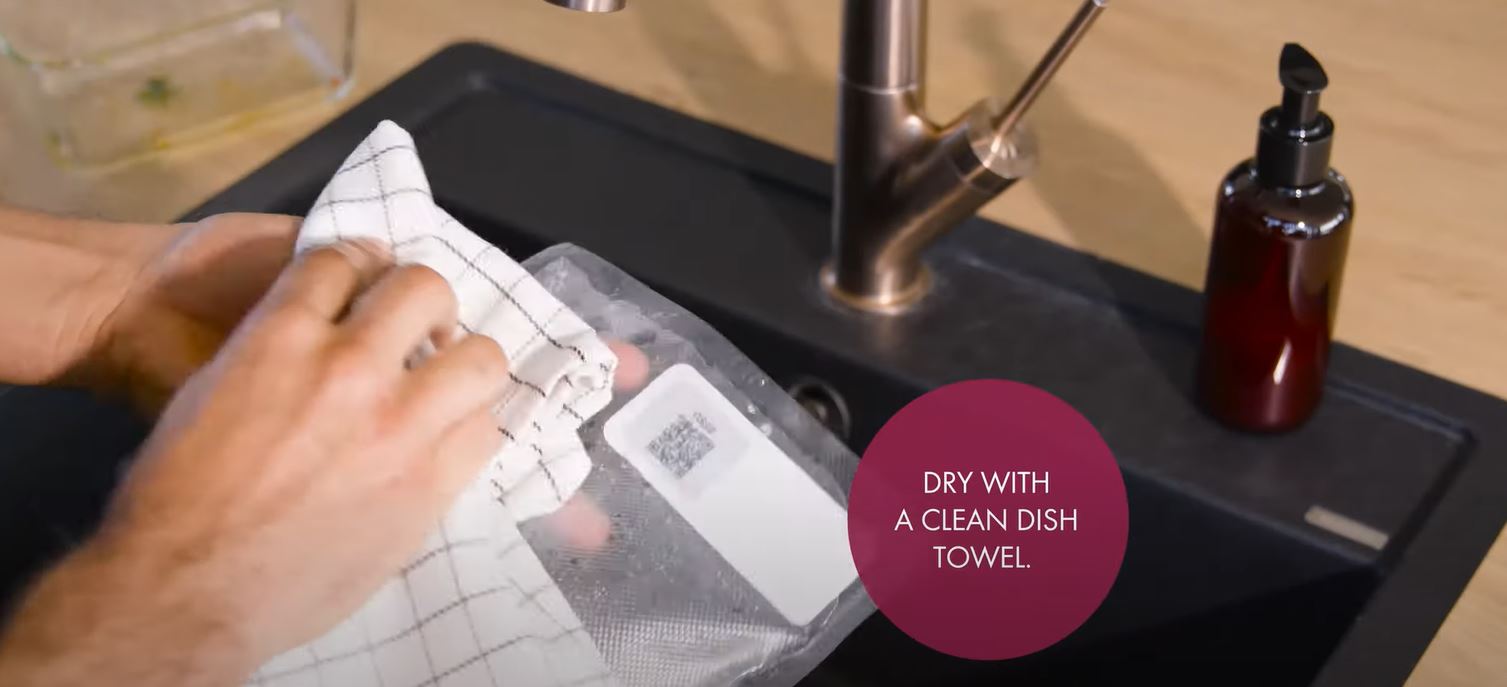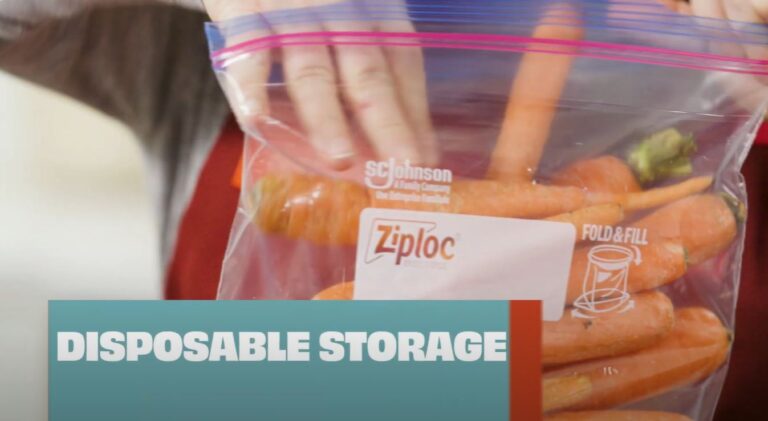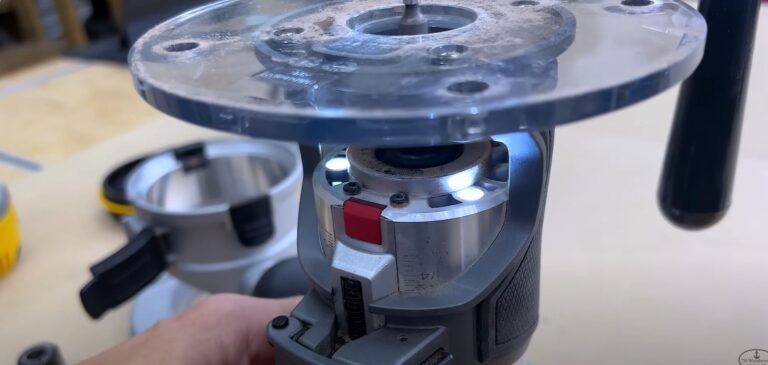How to Clean Reusable Food Storage Bags (Reusable Food Storage Bags)
Reusable food storage bags are a smart, eco-friendly alternative to single-use plastics, but keeping them clean is essential for food safety and durability.
Whether you use silicone, PEVA, or fabric-based bags, proper cleaning methods can extend their lifespan and prevent odors, stains, and bacteria buildup.
In this guide, you’ll learn step-by-step cleaning techniques, drying tips, and expert hacks to keep your reusable bags fresh, hygienic, and ready for daily use.
Why Cleaning Reusable Bags Matters
The shift to reusable food storage bags is a powerful step toward a zero-waste lifestyle, but this transition comes with a heightened responsibility for cleanliness. Unlike single-use plastics that are discarded after one use, reusable bags require diligent care to remain safe, hygienic, and effective.
Hygiene & Food Safety
The primary reason for meticulous cleaning is the prevention of food contamination and the resulting health risks.
- The Threat of Pathogens: Reusable bags are frequently used to store high-risk items such as raw meat, poultry, and fish. Even brief contact with these items can transfer harmful Bacteria (like Salmonella or E. coli) to the interior of the bag. If the bag is not sanitized, these pathogens can multiply rapidly, leading to cross-contamination when the bag is later used for fresh produce or snacks. This is the direct pathway to Foodborne Illness.
- Combating Mold and Biofilm: Moisture is the enemy. If a bag is sealed while even slightly damp, a dark, enclosed environment is created where Mold and mildew thrive. Furthermore, bacteria can adhere to the bag’s surface and create a protective, sticky layer known as biofilm. Effective cleaning techniques must be employed to physically break down and eliminate both mold and biofilm to ensure the bag remains safe.
- Non-Porous, But Not Self-Cleaning: While materials like silicone are non-porous and resist stains and odors better than plastic, they still require the mechanical and chemical action of washing to physically remove food debris, oils, and microbial residue.
Types of Reusable Food Storage Bags
The cleaning method you choose is entirely dependent on the material of your bag. You must understand the Material Differences to prevent damage.
Material Differences
Reusable bags fall into several main categories, each with distinct heat tolerances and cleaning requirements:
- Silicone Bags: Often made of platinum-cured silicone, these are the gold standard for versatility. Their high heat resistance (often up to ) means they are almost always safe for both the freezer and the dishwasher. They are durable, flexible, and resistant to permanent staining.
- PEVA Bags (Polyethylene Vinyl Acetate): These bags are popular due to their budget-friendly price point and are common in the market. However, they have a low heat tolerance. PEVA Bags are typically hand-wash only; exposure to the high heat of a dishwasher (especially the drying cycle) will cause them to warp, melt, and fail.
- Fabric Bags (Lunch Sacks): While not traditional Ziploc-style bags, reusable fabric lunch sacks or snack pouches are becoming common. These generally require washing in a washing machine on a cold or warm cycle and should be air-dried to prevent shrinking or material damage.
Understanding these differences is the first step in successful cleaning; always refer to the Manufacturer Instructions provided with your specific bag.
General Cleaning Guidelines
Before you choose a specific method, adhere to these universal rules to protect your investment and ensure hygiene.
Manufacturer Instructions
The most critical guideline is to follow the Manufacturer Instructions provided with your specific bag. These instructions dictate the heat limits and recommended cleaning agents based on the specific formulation of the material.
- Dishwasher-Safe vs. Hand-Wash Only: This label is non-negotiable. If your bag is designated “Hand-Wash Only,” you risk immediate damage by placing it in the dishwasher. If it is labeled “Dishwasher-Safe,” it almost always means top-rack placement is mandatory to keep the bag away from the lower heating element.
- Slider Bars: If your bag uses a separate plastic slider bar to seal, it is often best practice to remove the slider and hand-wash it separately. These rigid components are frequently made of less heat-tolerant plastic than the bag body and can easily warp in the dishwasher.
Step-by-Step Cleaning Methods
Whether you choose automation or manual cleaning, achieving a hygienic result requires a specific process.
Dishwasher Cleaning Method
This method is ideal for confirmed silicone bags or high-heat-rated plastics, as it provides superior sanitization.
Top Rack vs. Bottom Rack Placement
- Top Rack is Mandatory: Always place the bag on the Top Rack vs. Bottom Rack Placement. The bottom rack is too close to the heating element, which guarantees melting and warping of even high-quality plastics and silicone seals.
- Securing the Bag: To ensure the interior is cleaned and rinsed properly, the bag must remain open. Prop the bag open over the rack tines, or use specialized bag clips to hold the opening down. This prevents the bag from flipping over and trapping dirty water inside.
- Detergent Use: Use your standard Dishwasher Detergent, ensuring it is poured into the dispenser and not directly into the bag. After the cycle, always disable the heated dry feature and air-dry the bags immediately.
Hand-Washing Method
This method is mandatory for PEVA and other heat-sensitive plastics and is the best option for quick spot-cleaning.
Gentle Cleaning Agents
- Pre-Rinse: Immediately after use, rinse the bag with cold water to remove any solid debris and prevent staining. Cold water is better than hot water for removing fats and oils, which can solidify and rinse away instead of melting into the material.
- Washing: Use a generous amount of Dish Soap (preferably one that is mild and non-toxic) and warm water. Do not use harsh scouring powders or abrasive pads, as these can scratch and compromise the material’s surface, leading to greater stain absorption in the future.
- Tool Use: A soft sponge, cloth, or a Bottle Brush is ideal for accessing the deep corners and crevices of the bag, where food residue often accumulates.
Deep Cleaning for Stains & Odors
For the inevitable persistent stain or lingering garlic smell, turn to natural, powerful cleaning agents.
Natural Cleaning Power
These methods rely on non-toxic household staples to restore the bag’s freshness and appearance:
- Baking Soda Soak: For pervasive odors, fill the bag with warm water and add to tablespoons of Baking Soda. Seal the bag and let it soak overnight. Baking soda is a natural, highly effective deodorizer.
- Vinegar Rinse: For stubborn grime or to break down residual grease, fill the bag with a solution of part White Vinegar to parts water. Let the bag soak for 30 minutes, then rinse thoroughly.
- Sunlight Power: After washing, the final expert tip is to prop the bag open and place it in direct sunlight. The UV rays from the sun act as a natural sanitizer and are incredibly effective at neutralizing persistent odors and lifting stains (especially red sauce stains) without the use of harsh chemicals. A Lemon Juice and salt scrub can also be used on the stain before placing the bag in the sun.
Drying Reusable Food Storage Bags
The drying phase is arguably the most critical step in maintaining reusable bags. An inadequately dried bag is a perfect breeding ground for mold and mildew, instantly compromising all your hard cleaning work.
Air-Drying Techniques
Relying on natural air circulation is the safest and most effective way to dry flexible food storage bags.
- Proper Air Circulation is Key: Because bags are flexible and prone to collapsing, they need assistance to dry fully. The goal is to maximize Air Circulation inside the bag, ensuring that moisture doesn’t get trapped in the corners and creases.
- The Power of the Drying Rack: The most reliable tool is a dedicated Drying Rack (or a sturdy dish rack). Prop the bag open over the tines or on a dedicated bag stand. Ensure the bag’s opening is facing downward or slightly to the side to allow moisture to drip out freely.
- Mold Prevention: Mold Prevention is entirely dependent on this step. Even a small drop of water trapped in a corner, when sealed and stored in a dark drawer, can develop mold quickly. Therefore, never seal or store a bag unless you are certain it is bone-dry—both inside and out.
Towel Drying Method
While air-drying is superior, a quick towel dry can be used to accelerate the process, especially when using high-quality materials.
- Microfiber Cloth for Absorbency: Use a clean Microfiber Cloth or a clean cotton kitchen towel. Microfiber cloths are particularly effective due to their high Absorbency and soft texture, which minimizes the risk of scratching the bag material.
- The Inversion Method: Partially invert the bag and gently wipe the interior. Be careful not to force your hand or the cloth into narrow openings, as this can stretch the bag or compromise the seal.
- The Final Air Dry: Even after towel drying, always finish with a minimum of 30 minutes of Air Drying on a rack. Towel drying removes surface water but is unlikely to eliminate moisture trapped deep within the bag’s corners or the sealing mechanism’s grooves.
Common Cleaning Challenges
Certain foods and situations pose persistent problems for reusable bags. Knowing how to tackle these challenges ensures your bags maintain their clarity and freshness.
Removing Stubborn Stains
Despite being non-porous, materials like silicone can absorb color pigments from highly saturated foods.
- The Pigment Culprits: Tomato Sauce, chili, Curry, and deep-colored Berries are the main offenders. The pigments penetrate the surface layer of the material, leaving a residue.
- Stain Resistance & Sunlight Exposure: While silicone offers good Stain Resistance, Sunlight Exposure is the secret weapon against deep staining. After washing and rinsing, place the opened, wet bag in direct, strong sunlight for several hours. The UV radiation acts as a natural bleaching agent, neutralizing the color pigments without resorting to harsh chemicals.
Eliminating Lingering Odors
Garlic, onions, and certain sauces can leave a smell that persists even after a thorough scrub. This indicates that odor molecules are clinging to the bag’s material.
- Odor Absorption: Foods like Garlic and Fish Sauce contain potent volatile organic compounds that contribute to Odor Absorption. Simple soap and water may not be enough to neutralize these strong smells.
- The Vinegar Soak Solution: An expert solution is a Vinegar Soak. After washing, fill the bag with a mixture of one part distilled white vinegar and three parts water. Seal the bag and let it sit for several hours or overnight. Vinegar is a powerful, non-toxic deodorizer that neutralizes the odor molecules, leaving the bag scent-free after a final rinse.
Preventing Mold Growth
Mold is the ultimate threat to the longevity and safety of your reusable bags.
- The Source of the Problem: Moisture trapped inside a sealed bag is the sole cause of mold growth. This moisture can be residual water from washing or condensation from storing warm items.
- Proper Drying Protocol: The best defense is proactive Proper Drying. Ensure maximum Airflow during the drying phase, and never store bags sealed.
- Storage Conditions: Always store your clean, dry bags unsealed and, ideally, standing upright in a cool, dry place. Avoid throwing them into a cluttered drawer where air cannot reach the interior, as this compromises optimal Storage Conditions.
Eco-Friendly Cleaning Practices
The commitment to sustainability shouldn’t end with the purchase of the bag; it should extend to the way you clean it. Green Cleaning practices are often just as effective as chemical-based ones.
Using Natural Cleaners
Incorporating common household ingredients can achieve excellent results while minimizing your chemical footprint.
- Baking Soda for Scrubbing: Baking Soda (sodium bicarbonate) is a gentle abrasive that can be mixed into a paste with water to scrub away food residue without scratching the bag. It is also an excellent non-toxic deodorizer.
- Vinegar and Lemon for Disinfecting: Vinegar and Lemon are natural acids. White vinegar acts as a mild disinfectant and deodorizer. Lemon juice, when combined with sunlight, is an excellent stain lifter. Using these Non-Toxic & Sustainable alternatives reduces the amount of harsh chemical detergents entering your water system.
Reducing Water Waste
Be mindful of the water consumed during the cleaning process, especially if you opt for handwashing.
- Sink Soak vs. Running Tap: When handwashing, Reducing Water Waste is simple. Avoid washing and rinsing the bag under a continuously Running Tap. Instead, fill one basin or bowl with hot, soapy water for washing (the Sink Soak), and another with clean water for rinsing.
- Dishwasher Efficiency: Remember that running a full, modern dishwasher is generally more efficient than handwashing the same volume of items, contributing to overall Water Conservation and making the dishwasher the more Sustainable Living choice when your bags are rated for machine use.







